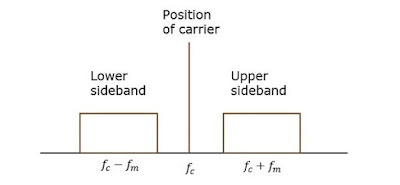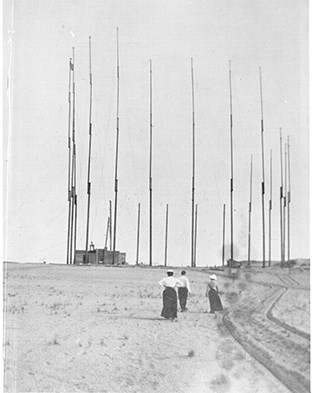-- Bottom line: I still don't know why ham radio adopted as a convention LSB below 10 MHz and USB above 10 MHz. There are several theories. but so far there is no convincing explanation in favor of any one of them. And almost all of the people involved are probably Silent Keys by now; this makes it more difficult to gather first-hand information.
-- I'm not even sure when the convention began to be observed in ham radio. Many of the early SSB books and articles make no mention of it. We don't see it in early ARRL Handbooks. The first mention of it that I found was in the 1965 issue of the ARRL's "Single Sideband for the Radio Amateur" page 8. This article claims that adding a provision for selectable sidebands would "add appreciably to the cost of the equipment. " It went on to say that, "For this and other reasons there has been a species of standardization on the particular sideband used in the various amateur bands. Nearly all operations in the 3.5 and 7 Mc. phone sub-allocation is on lower sideband, while the upper sideband is used on 14, 21, and 28 Mc."
-- We know that the informal convention was being followed as early as 1958. Jim N2EY reports that in 1958, the manual for the Central Electronics 20A shows that LSB was the "sideband most commonly used" on 75, with USB preferred on 20:
-- Some cite a 1959 ITU recommendation on commercial multiplexed radiotelephony as the reason for the convention. But I don't think this obscure and long-ago ruling explains the convention. If this were the case, we'd see follow-up FCC regulation, and at least some discussion of the ITU recommendation in the amateur radio literature. But we see none of this. And, as noted above, by 1958 hams were ALREADY -- on their own -- opting to use LSB on 75 and USB on 20. The 1965 ARRL SSB book refers not to some hard-and-fast rule, but rather to "a species of standardization" on LSB and SSB. That ARRL book said nothing of the 1959 ITU recommendation.
-- There is a widely held belief that this practice originated in the design of a rig that had a 5.2 MHz VFO and a 9 MHz filter. According to this theory such a rig -- due to sideband inversion -- would produce LSB on 75 meters and USB on 20. But, as we have demonstrated, this doesn't work, so this theory has to be discounted.
-- Early SSB activity seems to have been concentrated on 75 meters, and there was a competition for space with AM stations. SSB operators appear to have used the very upper band edge as their gathering spot. Using LSB allowed them to operate very close to the upper band edge -- a lot closer than AM stations could go. This may explain why LSB became the preferred SSB mode on 75. But how do we explain USB on 20 and above? That remains a mystery.
-- It is important to remember that in the early days of SSB, for most hams there were only two important phone bands: 75 meters and 20 meters. 40 meters was CW only until 1952, and even after that was crowded with shortwave broadcast stations. So a design that allowed for both 75 and 20 was twice as good as a monoband design.
-- Early on there were designs and parts for phasing rigs. You could take that ARC-5 VFO at 5 MHz, build a phasing generator around it, and then mix it with a 9 MHz to get on either band. But with just a simple switch, this kind of rig could operate on USB or LSB on either band. So the early popularity of this kid of rig does not explain the convention.
-- There were a lot of surplus 5 MHz ARC-5 VFOs available. There were also FT-243 and FT-241 surplus crystals at both 5 MHz and 9 MHz that could be made into filters. Later in the 1950s, 9 MHz commercial crystal filters became available. If you used a 9 MHz filter with a 5 MHz VFO, there would be no sideband inversion in your rig. If the SSB generator was putting out LSB on 9 MHz, you'd be on LSB on both bands. So if there was a desire to have LSB on 75, why not just also have LSB on 20?
-- But if you built a 5.2 MHz filter and a 9 MHz VFO, you could have LSB on 75 and USB on 20 without having to shift the carrier oscillator frequency. This would save you the trouble and expense of moving the carrier oscillator/BFO to the other side of the passband. This desire to economize and simplify may explain why we ended up with LSB on 75 and USB on 20. But this still begs the question: Why the desire for USB on 20?
-- Both the manufacturers and the hams wanted there to be sideband standardization. With monoband rigs, the manufacturers would be able to cut costs by building for only one sideband. Hams also wanted to cut costs, and they did not want to have to figure out which sideband a station was on when trying to tune him in.
-- By 1962-1963 Swan and Heathkit were selling mono-band SSB transceivers that used the "conventional" sidebands: The rigs for 75 and 40 meters were on LSB while the 20 meter rigs were on USB. There were no provisions for switching to the other sideband. This seems to have reinforced the practice of observing the convention. (Heath later added sideband switching to the HW monobanders -- in view of the growing observation of the convention, they may have been better off sticking with their original design. Does anyone know why they did this?) But again, why USB on 20 and above?
-- In 1963, Swan, by then in Oceanside California, came out with the Swan 240. Swan used a filter centered at 5174.5 kc. The VFO ran from 8953 kc to 9193 kc on 75 and 20. The VFO ran from 12222 to 12493 on 40. This gave the buyer 75 and 40 on LSB, and 20 USB with only one carrier oscillator frequency. (Swan offered a mod that allowed hams to install an additional, switchable carrier oscillator frequency. I luckily acquired one such modified rig.) But again, there is an explanation for LSB on 75, but why USB on 20 and above?
This is an important part of ham radio history. There should be a clear answer. We need to find it. If anyone has any good info on this, please let me know.






































